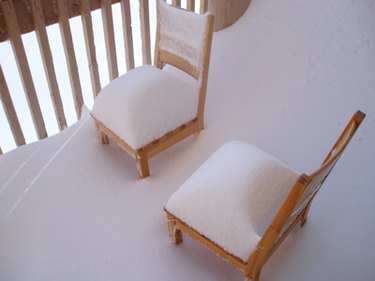
Calcium chloride flakes, or salt flakes, may come into contact with aluminum if they are used to prevent freezing on or near an aluminum surface. Although these flakes are very useful for preventing dangerous conditions that could be slippery and perilous, they can do some damage to your aluminum surface if you are not diligent. Knowing what to look out for when you are looking for the effects of calcium chloride flakes on aluminum will help you keep your aluminum surfaces looking their best.
Pitting
Video of the Day
Calcium chloride flakes can cause pitting in aluminum surfaces if they are left undisturbed for an extended period of time. You will likely notice small, uneven etchings in the aluminum surface first. You can prevent this problem by sweeping away the flakes once they are no longer needed and rinsing the aluminum surface down thoroughly with a high-pressure stream of water.
Video of the Day
Discoloration
Salt can cause aluminum to develop discolored, corroded areas. Generally, these areas will be brown or coppery in color, and they will usually remain flat on the surface of the aluminum when they are caused by salt flakes, which are relatively low impact. In some cases, depending on the aluminum alloy composition and other environmental factors, this discoloration may be white or black as well. You can prevent this effect in the same way that you would prevent pitting: by washing the surface to remove the calcium chloride flakes as soon as they are no longer necessary.
No Effects
Aluminum is highly resistant to corrosion, and salt flakes have a relatively minor impact on aluminum surfaces. In most cases, you will likely not see any effects of salt flakes on aluminum--other than the fact that they should keep the area to which they are applied relatively free of ice.